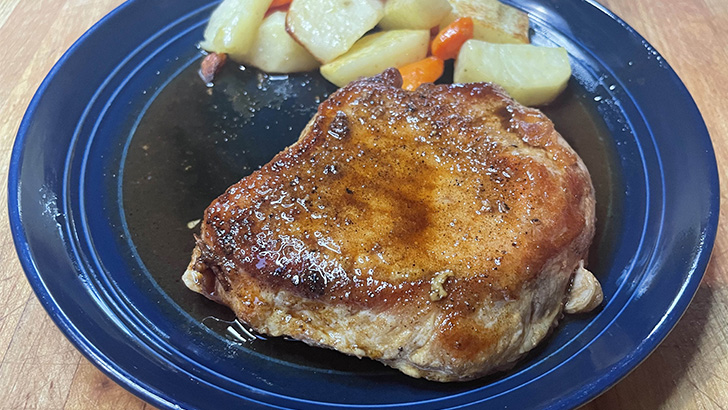When you need a sophisticated dish that doesn’t require hours to make, try balsamic glazed pork loin chops. As long as your friends and family don’t see you making it, they’ll believe you slaved to put it together. It’s that good.
Why make balsamic glazed pork loin chops
Here are a few reasons why you’d want to make this dish:
- Incredible flavor: Balsamic glaze adds a rich, tangy, and slightly sweet flavor to the pork loin chops. The combination of balsamic vinegar, sugar, and pantry seasonings creates a delicious and complex taste that complements the natural flavors of the pork.
- Easy preparation: As noted, this dish is easy. Have it ready in under 30 minutes. Serve it with Minute Rice and/or sauteed green beans for a fabulous weeknight dinner.
- Versatility: You can serve these pork chops with many side dishes, so they’re versatile. If you have the time, pair them with roasted or mashed potatoes, pasta, or steamed vegetables.
- Elegant presentation: The glossy balsamic glaze coating the pork loin chops adds flavor and gives the dish an attractive and sophisticated appearance. You could serve these chops for dinner parties or special occasions where presentation matters.
- Balanced meal: Serve this pork with vegetables and a starch and you have a nice, balanced meal with protein, carbohydrates, and essential nutrients.
- Customizable: You can experiment with the balsamic glaze. Try adding Dijon mustard, rosemary, garlic, or red pepper flakes to the glaze for different flavor profiles.
Ingredients for balsamic glazed pork loin chops
Here’s what you need to make these pork chops. Except for the pork itself, the ingredients are all things you should have in your pantry.
- 4 boneless pork loin chops
- Salt
- Ground black pepper
- Garlic powder
- Granulated onion
- Ground ginger
- Olive oil
- Balsamic vinegar
- Granulated sugar
How to make balsamic glazed pork loin chops
1. Prep the pork
Set your pork chops out on a cutting board. Trim any thick fat sections — you’ll usually find these just on the edges.
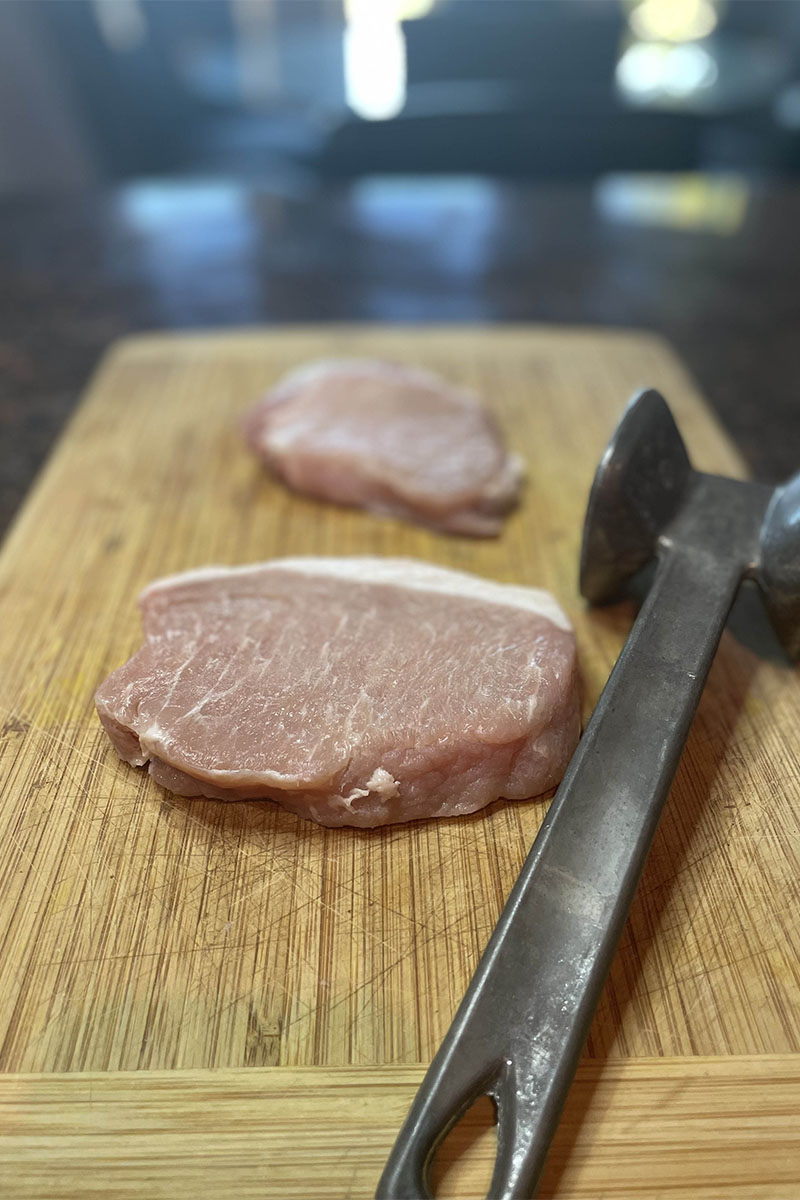
Next, cover your pork chops with plastic wrap and pound them gently. If you don’t have a mallet, use a rolling pin or the back of a frying pan instead. Most importantly, you want the pork chops to be the same thickness. This helps them cook evenly, so you don’t end up with one juicy, tender chop and one dried, tough one. Try to get all of your chops to a thickness of 3/4 of an inch.
2. mix the dry rub
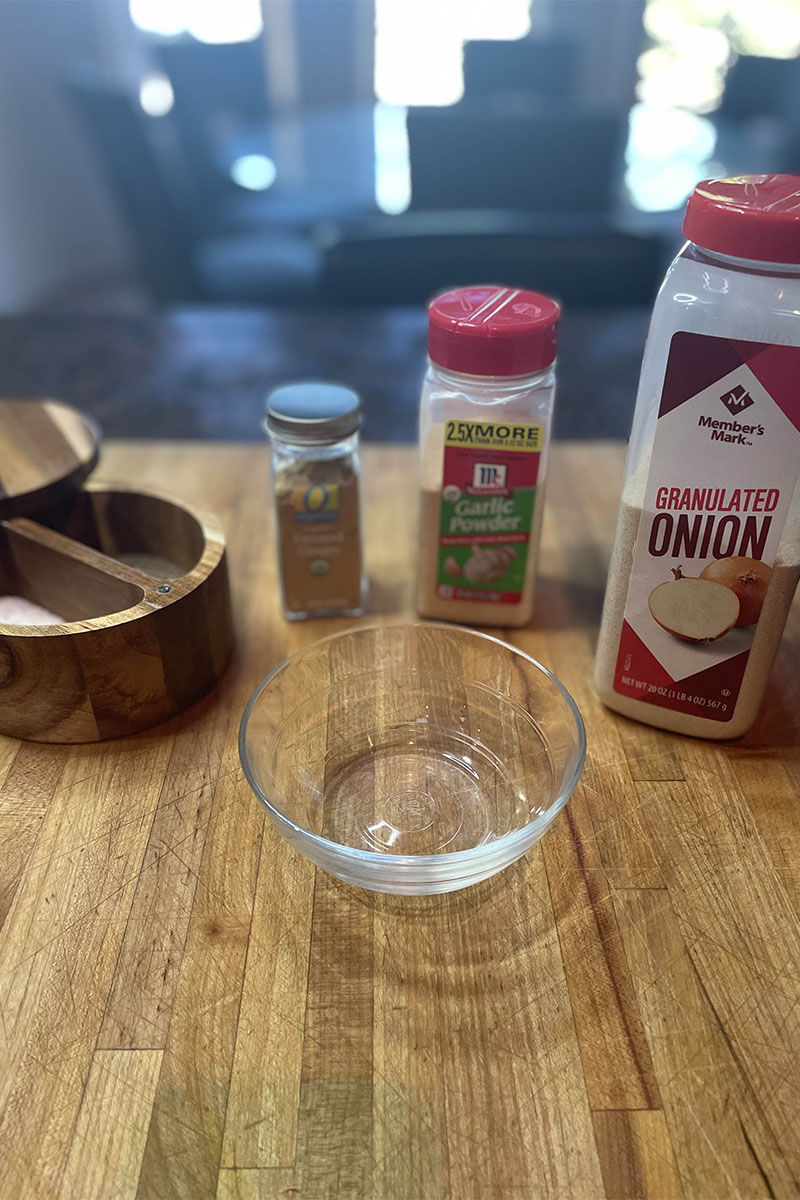
The dry rub includes salt, pepper, garlic powder, onion powder, and ground ginger. Mix these in a small bowl. Here are your measurements:
- 1 teaspoon salt
- ½ teaspoon ground black pepper
- ½ teaspoon garlic powder
- ½ teaspoon granulated onion
- ¼ teaspoon ground ginger
Rub this mixture all over the pounded pork chops.
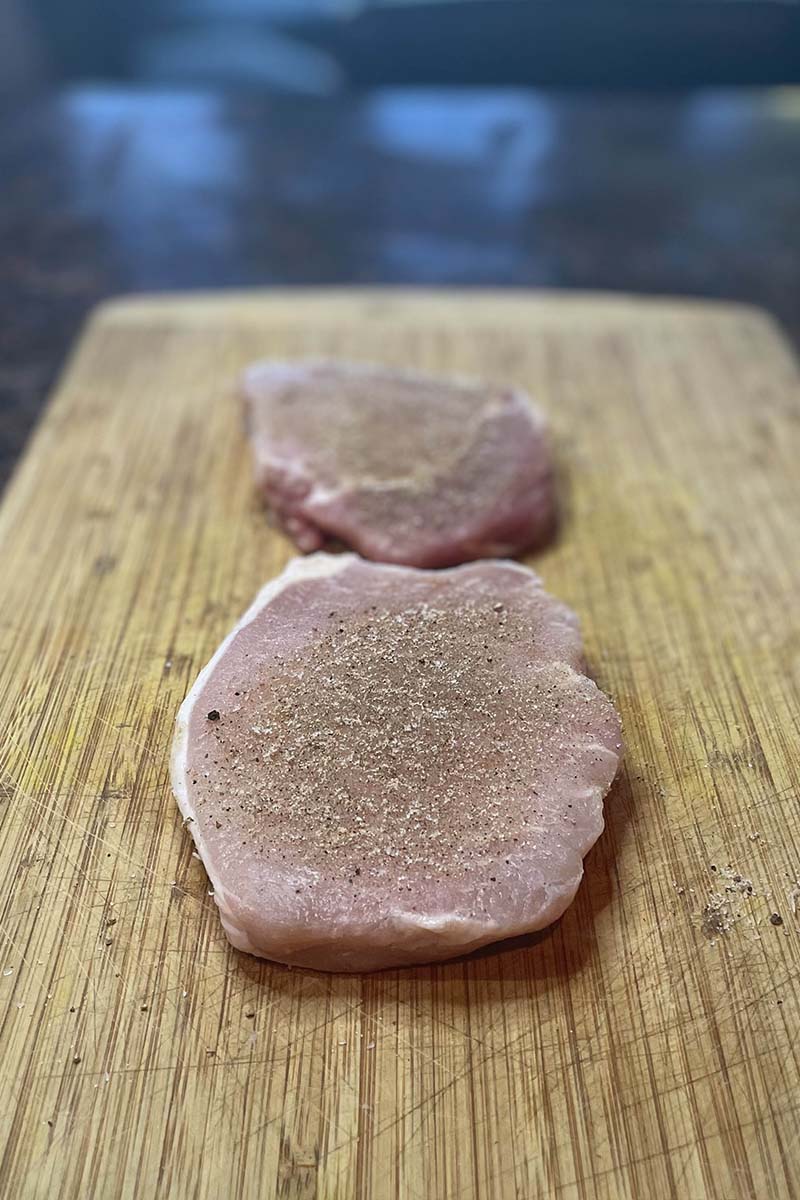
3. Cook the chops
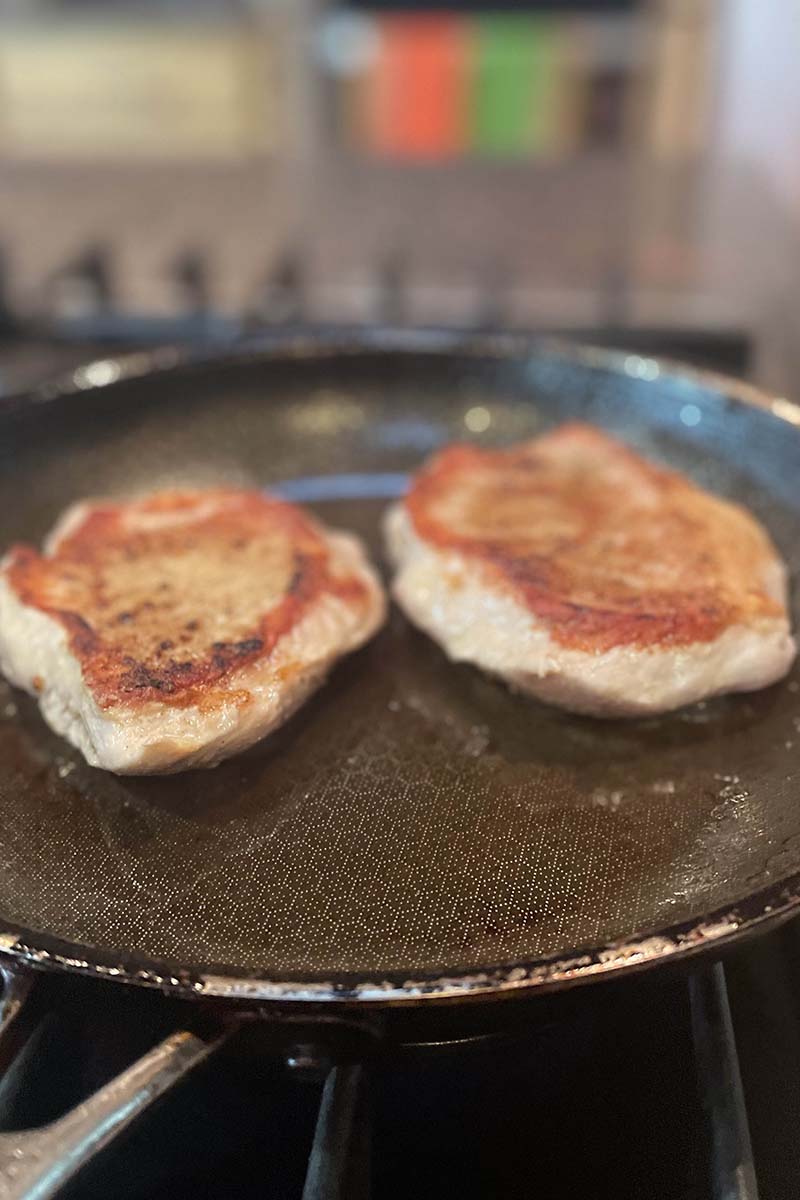
Add 1 tablespoon of olive oil to a large nonstick skillet over medium heat. Once the pan is hot, add the pork chops so they are not touching each other. Let them cook undisturbed for 5 minutes, then flip. Cook on the other side until they have reached an internal temperature of 145°F or 63°C. This usually takes 5 to 7 minutes per side, but it could be longer or shorter depending on the meat’s thickness and the type of pan you’re using.
Use a meat thermometer to verify the chops are done. Don’t overcook them as they can be dry.
Remove the pork chops from the pan and set aside.
4. Make the glaze and serve
In the same skillet, add the balsamic vinegar and sugar. Whisk and then simmer gently until the mixture thickens. This should take 2 minutes or so.
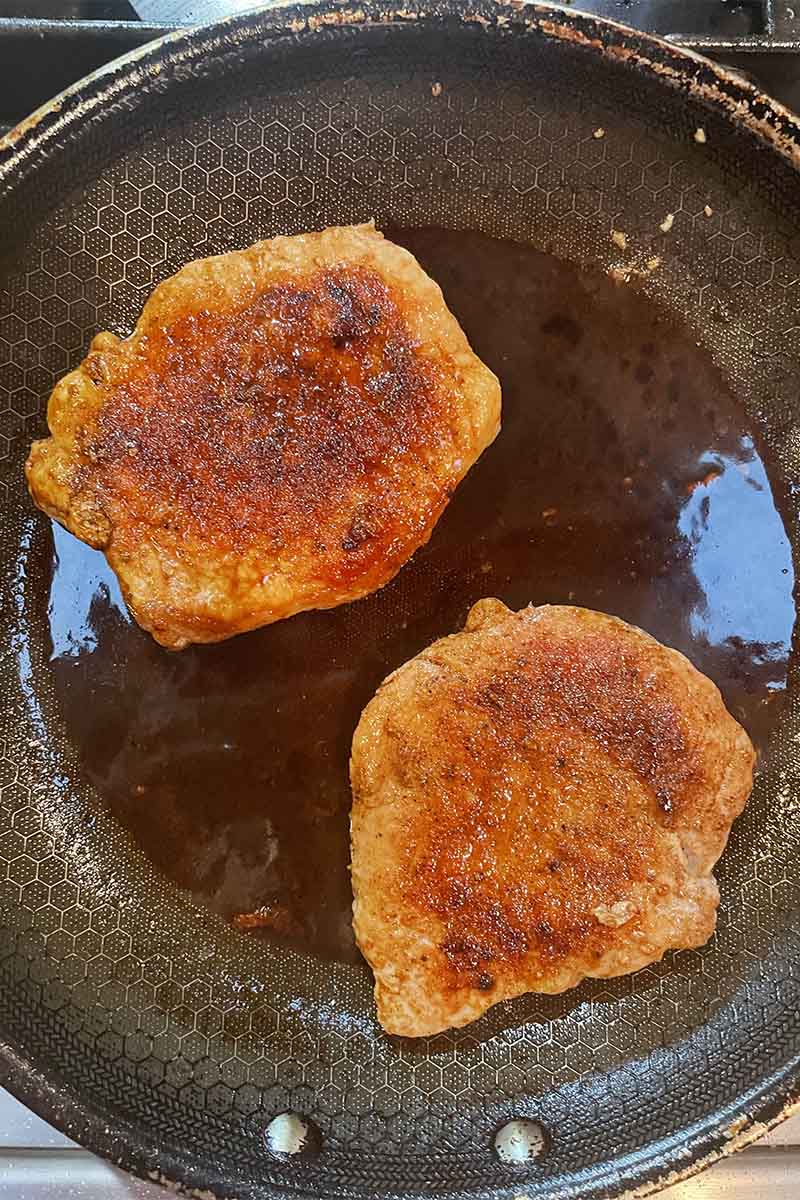
Add the chops back to the pan, along with any liquid that collected on the plate. Turn the chops so they are coated with sauce. Serve hot and pour the pan sauce over the top.
What to serve with balsamic glazed pork loin chops
As noted, this main course is super versatile, so you can serve it with many side dishes. I like a roasted potato on the side. The potato soaks up some of the excess glaze, which is delicious. You can also do a green salad (though I’d put that in a separate bowl), rice, or a simple pasta tossed with olive oil and sun-dried tomatoes. For something light, bright, and fresh, try Rachna’s cucumber radish salad.
But you also need drink pairings for this dish, yes? Here are some ideas:
Wine
Wines with a good acidity and medium-to-full body work well with balsamic glazed pork chops. If you like red, try Pinot Noir, Syrah, or Zinfandel. If you prefer white, go for a Chardonnay or Sauvignon Blanc.
Beer
An amber ale or brown ale can complement the rich flavors here. A Hefeweizen is a good choice, too. It will pair nicely with the sweetness and tanginess of the balsamic glaze.
Cider
A dry or semi-dry apple cider can be a refreshing pairing for balsamic glazed pork chops. The fruity and slightly tart flavor of the cider can balance the rich, savory flavors.
Sparkling water or tea
When in doubt, go for sparkling water or iced tea.
Balsamic Glazed Pork Loin Chops Recipe
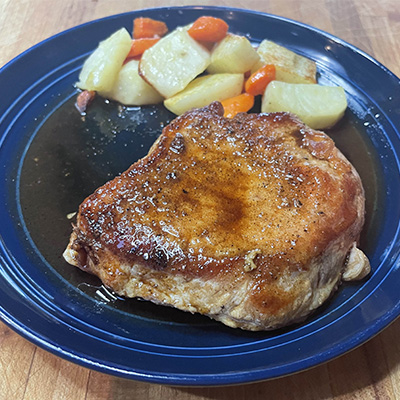
This is an elegant dish that requires little work. Simply season the pork loin chops, brown them, and make a quick glaze with balsamic and sugar.
Ingredients
- 4 boneless pork loin chops
- 1 teaspoon salt
- ½ teaspoon ground black pepper
- ½ teaspoon garlic powder
- ½ teaspoon onion powder
- ¼ teaspoon ground ginger
- 2 tablespoons olive oil
- 2/3 cup balsamic vinegar
- 2 teaspoons sugar
Instructions
- Trim the fat from the pork chops. Pound them lightly with a mallet until they are about 3/4-inch thick.
- In a small bowl combine salt, pepper, garlic powder, onion powder, and ground ginger. Season the pork chops on both sides with this mixture.
- Heat olive oil in a large skillet over medium heat. Add the pork chops and cook until well browned on both sides and cooked through (the internal temperature has reached 145°F or 63°C), about 5-7 minutes on each side. Remove the pork chops from the pan to a plate. Lower the heat slightly.
- Add balsamic vinegar and sugar and cook until slightly thickened, about 2 minutes. Return the pork chops back to the pan with any liquid that has collected on the plate.
- Turn the pork chops several times to get them coated with the sauce. Serve hot and pour additional sauce over the pork chops if desired.
Notes
You can use a different oil, but make sure your choice has a high smoke point. Avocado oil and canola oil are good options.
Nutrition Information:
Yield:
4Serving Size:
1Amount Per Serving: Calories: 272Total Fat: 14gSaturated Fat: 3gTrans Fat: 0gUnsaturated Fat: 9gCholesterol: 68mgSodium: 578mgCarbohydrates: 10gFiber: 0gSugar: 9gProtein: 23g
Nutrition information isn’t always accurate.
More ways to make pork loin chops
If you’re like me, you buy the giant package of pork loin chops from your club store. And so you need some inspiration for preparing the rest of those bulk-priced chops. Try these:
Balsamic glazed pork chop FAQs
Can I use bone-in pork chops instead of boneless?
Yes, you can use bone-in pork chops for this recipe. Keep in mind that bone-in chops may take slightly longer to cook than boneless chops. Always check the internal temperature with a meat thermometer to ensure it reaches 145°F (63°C) before serving.
What type of balsamic vinegar should I use?
A good-quality balsamic vinegar will provide the best flavor for the glaze. However, you can also use a more affordable balsamic vinegar or even a balsamic glaze, which is a thicker, already reduced version of balsamic vinegar.
How can I prevent the pork chops from drying out while cooking?
Generally, to keep pork chops moist and tender, avoid overcooking them. Use a meat thermometer to ensure the internal temperature reaches 145°F (63°C) and then let the chops rest for at least 3 minutes before serving. (This recipe has a resting time built in while you are making the glaze.) You could also choose thicker or darker cuts of pork, which tend to be juicier.
Can I marinate the pork chops before cooking?
Yes, marinating the pork chops can add extra flavor and tenderness. You can marinate the pork chops in a mixture of balsamic vinegar, olive oil, and your choice of herbs and spices for 30 minutes to 2 hours before cooking.
How do I know when the balsamic glaze is ready?
The balsamic glaze should thicken as it simmers, reaching a syrupy consistency. It should be thick enough to coat the back of a spoon, but not so thick that it becomes difficult to pour. If it becomes too thick, you can add a small amount of water to thin it out.
